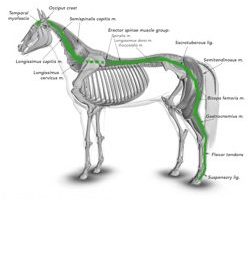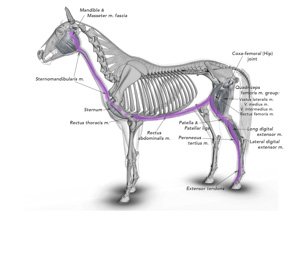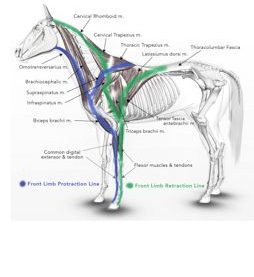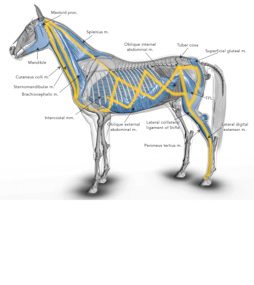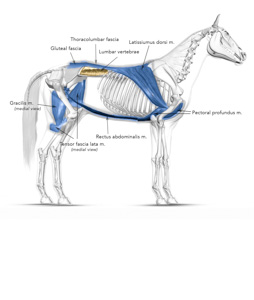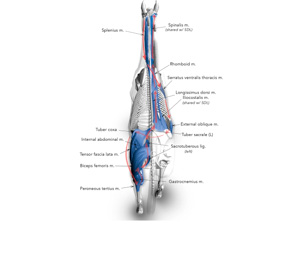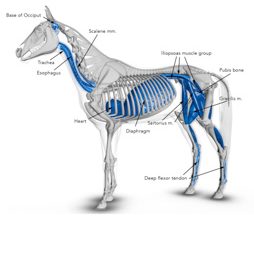Aiken, SC
info@equus-soma.com
Equus-Soma
Equine Osteology & Anatomy Learning Center
Waldoboro, ME
207-542-6132
The Fascial Web in Horses - Discovery & Clinical Observations
I was introduced to the "World of Fascia" by the late Dr. Kerry Ridgway, Equine Integrative Veterinarian, who had spent years researching and developing a unique treatment protocol for releasing musculoskeletal tension in horses. He discovered that by stimulating particular acupoints, the result was a discernible release of tension in specific muscle groups (myofascial units). With every horse he treated, Dr. Ridgway became more convinced that the success of his technique was directly related to the fascial network.
In 2015, Dr. Vibeke Elbrønd and Rikke Schultz from the Univerisity of Copenhagen* published their observations from dissections of Icelandic horses in which they identified fascial lines (meridians) very similar to those described in humans by Thomas Myers. (*Elbrønd, V.S. and Schultz, R.M. 2015. Medical Research Archives. Issue 3.)
Dr. Ridgway was keen to associate his acupoints and their specific myofascial patterns with the facial lines described by Elbrønd & Schultz. At the same time, I wanted visual aids to help me learn and understand the path of each fascial line and the muscles they influence relative to results I see during my bodywork sessions.
Using the 3D Horse Anatomy Software (Biosphera), I isolated the muscles associated with each individual fascial meridian as outlined by Elbrønd & Schultz, then used Photoshop to enhance and label each illustration under the watchful eyes of Dr. Ridgway. Click on any of the boxes below for details about each line.
- DISCLAIMER: My interpretations of Elbrønd & Schultz’s publications with respect to the paths and muscles associated with the individual fascial lines, are not set in stone. Studies of the fascial system in horses is on-going and is just the beginning of a full understanding of the fascial connections within the horse!Vibeke Elbrønd Discusses Fascial Lines in Horses at the 2015 Fascia Research Congress
These studies of the fascial network in both horses and humans are giving us a much better understanding of movement and biomechanics. The extent of the lines, many running from the head to the feet (or hooves) and their inter-connectivity help explain how problems in one part of the body can be related to another part, or as Dr. Ida Rolf once said: "Where you think it is, it ain't."
PHOTO CREDITS: The majority of images used on this website are property of Equus-Soma (Pamela Blades Eckelbarger). Images of me taken at Presentations are provided courtesy of Helen Peppe and other attending participants (thank you!!). Images on the About page of myself competing with Irish are courtesy of Flatlandsfoto. Images of skeletons in the banners are from Muybridge 1881.
November through July
1165 Shaws Fork Rd.
Aiken, SC 29805Equus-Soma
Equine Osteology & Anatomy Learning Center
Pamela Blades Eckelbarger M.S. Zoology
eqsoma71@gmail.com
(207) 542-61322024 ©ALL RIGHTS RESERVED
August through October
190 Horscents Ln.
Waldoboro, ME 04572
